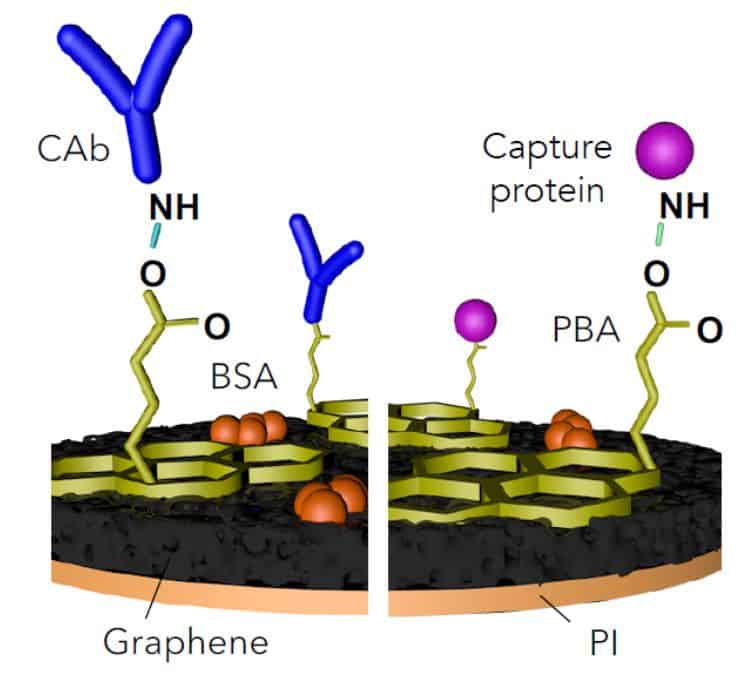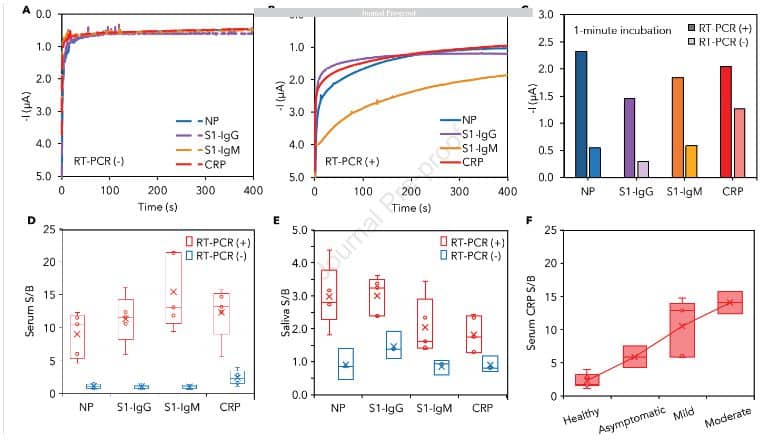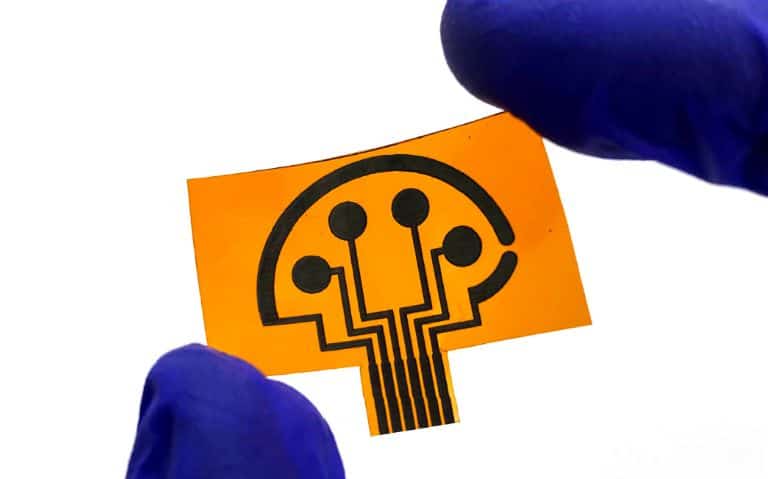Scientists have created a graphene-based biosensor for a rapid test for COVID-19. You can do this test yourself at home and get the result in less than ten minutes.
The presence of the virus and its effect on the body can be judged by different biomarkers. For example, the immune system responds to the virus’s antigen as antibodies, with the body producing specific antibodies for each type of virus. Depending on the stage of the disease, it can be immunoglobulin G (IgG) or immunoglobulin M (IgM). Other markers are nucleocapsid protein, which plays a role in the assembly of new viral particles, and C-reactive protein, which indicates the severity of the disease. Currently, there are many methods for detecting these markers, one of which is electrochemical.
The electrochemical method for detecting molecules makes it possible to determine their concentration by changing the current flowing between the electrodes. One of the electrodes (working) acts as a substrate for assembling a biological structure that interacts with detectable markers. Depending on the concentration of the marker that is bound to the structure, the resistance changes, and hence the current between the electrodes. These important biological parts of the structure are called functional and can be of different types – direct (using one antibody), indirect (two antibodies are used, one of which is labelled), sandwich-type (the protein that needs to be registered is between two antibodies).

Rebeca M. Torrente-Rodríguez et al. / Matter, 2020
A team of scientists from the California Institute of Technology led by Wei Gao has developed and manufactured an electrochemical multi-sensor that can simultaneously measure four markers – IgG, IgM, C-reactive and nucleocapsid proteins. In their study, the authors focused on the detection of the SARS-CoV-2 virus.
The multisensor consists of four separate working electrode pads and a common electrode that encircles these pads. The entire functional structure of the sensor is located on working graphene electrodes and consists of a linker, antibodies, and labeled antibodies. A linker is required to stabilize the graphene surface and bond with an antibody or other protein. To register C-reactive and nucleocapsid proteins, the authors sewed an antibody to the linker, which specifically binds to the desired protein, and then added another labeled antibody on top to amplify the signal.
This structure is called “sandwich” and is highly sensitive due to the presence of two antibodies. The structure for detecting IgG and IgM looks simpler and consists of a piece of the SARS-CoV-2 virus itself, to which the antibody binds, and a labeled antibody. Due to the presence of a second antibody, this structure is called indirect.

Rebeca M. Torrente-Rodríguez et al. / Matter, 2020
In search of a better configuration to measure all four markers, the scientists tested different linkers and types of functional structures and showed that the selected set is optimal with sensitivity and specificity. They tested the sensor for other similar SARS-CoV and MERS-CoV viruses to show its specificity to SARS-CoV-2.
In addition to measuring the markers diluted in buffered solution, the authors tested the sensor on real biological fluids – blood plasma and saliva. The results for plasma were more contrasting, but in both cases, they were able to reliably determine the presence of the virus and assess the severity of the disease.
The availability of affordable and sensitive rapid COVID-19 tests can make life much easier during a pandemic and help fight it.
The work was published in the journal Matter.
